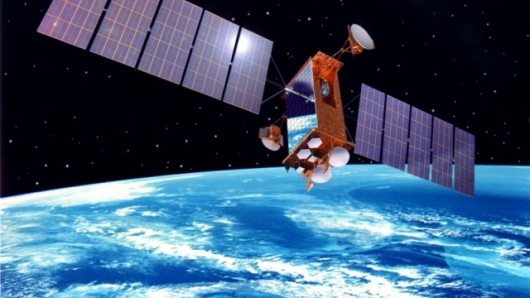The Space Tracking and Surveillance System (STSS) demonstration satellites, built by a Northrop Grumman and Raytheon team for the U.S. Missile Defense Agency (MDA), collected data during an Aegis Ballistic Missile Defense test June 26 that will be used to create a concept of operations for future space-borne, operational missile defense sensors.
Designated FTM-18, the combined Aegis Launch on Remote and Engage on Remote exercise involved the successful intercept of a medium-range target by the newest variant of MDA’s Standard Missile-3 interceptor, the SM-3 1B.
The pair of STSS demonstration satellites collected data in infrared wave bands similar to those planned for MDA’s proposed Precision Tracking Space System (PTSS), said David Bloodgood, STSS program manager for Northrop Grumman’s Aerospace Systems sector in Redondo Beach, Calif.
“This mission allowed STSS to take data specifically to help refine the future operations of PTSS, which MDA is designing to perform space-based tracking of ballistic missiles. Our collection settings were tuned to give maximum utility of collected data to PTSS,” Bloodgood said.
“STSS was able to collect data on the medium-range target, meeting many mission objectives including collecting data on plumes, spent stages and complex scenes.”
Northrop Grumman is performing manufacturing and production readiness systems engineering as a member of the PTSS Integrated Systems Engineering Team (ISET). As prime contractor for STSS, the company brings extensive systems engineering and integration experience in midcourse missile tracking to PTSS ISET, Bloodgood said.
The FTM-18 flight test supported the initial phase of MDA’s Phased Adaptive Approach for missile defense in Europe that features deployments of increasingly capable sea- and land-based missile interceptors and a range of sensors to address regional ballistic missile threats to Europe and to U.S. forces deployed there.
Using sensors capable of detecting visible and infrared light, the STSS demonstration program serves as the experimental space layer of the Ballistic Missile Defense System (BMDS). The program’s mission objective is to provide accurate tracks of midcourse re-entry vehicles to the shooter.
Both STSS satellites have participated in major BMDS tests since 2010. With sensor payloads capable of detecting visible and infrared light, the low-earth orbiting spacecraft have demonstrated a number of capabilities that had existed in theory or in the lab, but never in the actual environment where they would be used. They have shown, for example, that precision tracking of a missile throughout its flight can be done with satellites alone










